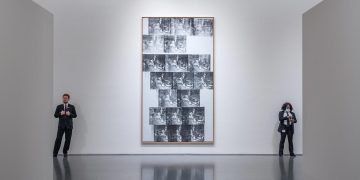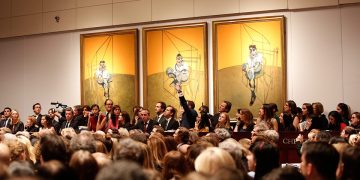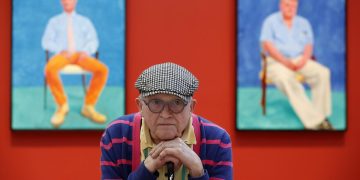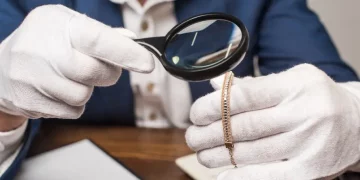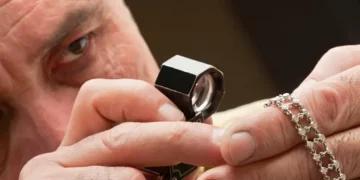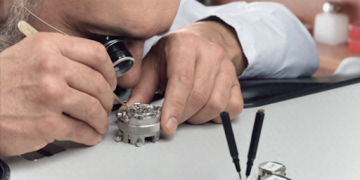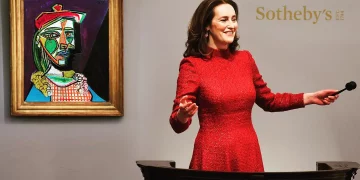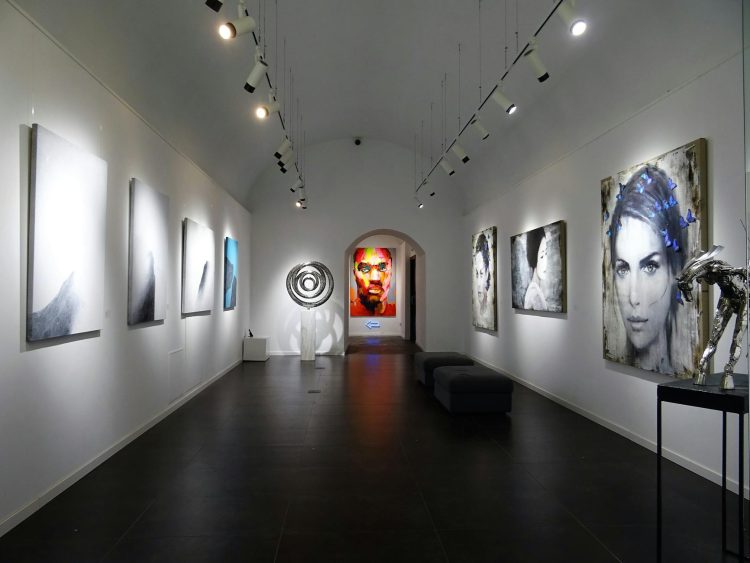The world of celebrity collecting is often seen as glamorous, filled with rare artifacts, luxury items, and high-profile auctions. But what if the glitz and glamour were merely a smokescreen for something far darker? In recent years, high-profile celebrity collectors have been under increased scrutiny for using their public personas and love for rare items to conceal far more illicit activities. One such figure, whose name has become synonymous with rare and valuable collectibles, is suspected of hiding a complex network that spans global markets and threatens the integrity of the art and collectibles industry.
The connection between celebrity collectors and illicit activities is a topic that has remained under the radar for years, but the recent rise of financial crimes such as money laundering and the illegal art trade has begun to shine a light on the darker side of high-profile collecting. At the heart of this shadowy underworld is the very public face of a celebrity known for their extravagant purchases, whose collection appears to be worth millions.
In this article, we will dive into the illicit networks used by some of the world’s wealthiest and most influential collectors, exploring the techniques they employ to launder money and hide illicit wealth. We will examine how art, rare artifacts, and high-value collectibles have become tools for criminals to evade authorities and carry out illegal financial transactions. But perhaps most intriguingly, we will delve into one celebrity collector whose public persona as a high-profile collector may be masking something much darker.
The Rise of the Celebrity Collector
Celebrities have long been involved in collecting rare items, whether it’s art, antiques, luxury cars, or sports memorabilia. Their purchasing power, coupled with the media attention they receive, has made them the perfect targets for auction houses, galleries, and private sellers looking to sell high-value collectibles. But for many of these celebrities, collecting is more than just a hobby or passion; it’s a way to invest money, enhance their personal brand, and flaunt their wealth.
For years, the art world has been a lucrative investment opportunity for the rich and famous, with works by iconic artists like Picasso, Van Gogh, and Warhol selling for millions. Rare antiquities, luxury timepieces, and vintage cars have also become highly sought-after items, with celebrity collectors willing to pay top dollar for these pieces. However, as the value of these items increases, so too does the opportunity for criminal organizations to exploit them for illicit gain.
The intersection of celebrity status and rare collectibles creates the perfect environment for money laundering. When celebrities purchase rare items, they can pay far above market value, making the transaction seem legitimate, while in reality, the overinflated price is simply a front for moving illicit money.
The Illicit Collecting Networks
As global markets for art, luxury items, and collectibles continue to grow, so does the potential for illegal activity. A well-known tactic for laundering money involves purchasing valuable pieces through auctions, private sales, or gallery purchases, and then selling or trading them at inflated prices. The collectibles are often sold multiple times, with each transaction marking an increase in value, making it difficult for authorities to track the origins of the funds.
One of the primary ways that criminals use the collectibles market to launder money is by inflating the price of an item through a series of complex transactions. These transactions may involve a network of wealthy collectors, intermediaries, and auction houses that collaborate to artificially increase the price of an item, thus allowing them to “clean” their illicit earnings.
In these money laundering schemes, the celebrity collector is often used as a cover. The celebrity’s name, media presence, and financial resources allow them to purchase rare items at seemingly legitimate prices, all while the criminal networks use the celebrity’s purchase as a way to funnel money into legitimate channels. These techniques often involve complex financial arrangements and may span multiple countries, making it difficult for law enforcement to detect and dismantle the illicit networks.
The art and collectibles market is particularly susceptible to these schemes because of the lack of transparency in pricing, the ability to easily move items across borders, and the subjective nature of valuing certain pieces. Unlike traditional investments, where value is based on more standardized metrics, the value of art and rare collectibles can be manipulated, providing an ideal cover for money laundering.
Case Study: The Celebrity Collector at the Center of It All
At the heart of this investigation is a well-known celebrity, famous for their extravagant collection of rare art, historical artifacts, and limited-edition luxury goods. On the surface, this celebrity’s purchases seem to be nothing more than a passion for collecting rare and beautiful items. However, as investigators have uncovered, there is much more to the story.
Behind the scenes, this celebrity’s collection has become a pawn in a complex web of illicit transactions. The celebrity’s name is frequently used in high-profile auctions, and their purchases routinely set new records for sale prices. What initially appeared to be a genuine interest in art and antiques soon became the subject of a covert investigation by financial crime experts and law enforcement officials.
Through careful analysis, investigators discovered that the celebrity’s purchases often involved inflated prices, with the same pieces being resold several times in a series of transactions that appeared legitimate on the surface. These transactions, however, were designed to conceal the true origins of the money and to facilitate the laundering of illicit funds. The celebrity’s public image as a collector provided the perfect cover for these activities.
As authorities began to piece together the puzzle, they uncovered a network of middlemen, art dealers, and auction house executives who were complicit in these schemes. These individuals played key roles in ensuring that the celebrity’s purchases were conducted in a way that would avoid suspicion, while also creating an illusion of transparency. The money laundering process was complex, but the celebrity’s status ensured that their transactions would not raise any red flags.
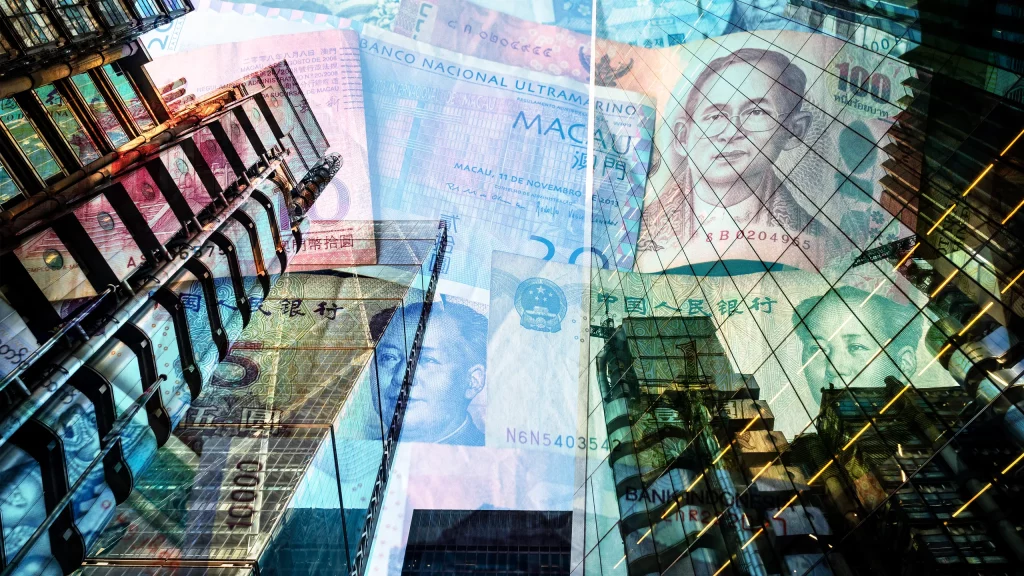
Money Laundering Techniques in the Collectibles Market
The process of money laundering through the collectibles market is often sophisticated, with multiple steps designed to conceal the illicit nature of the transaction. In the case of the celebrity collector, the process typically follows these steps:
- Overpayment for Items: The celebrity pays an inflated price for a rare item, which may be worth far less than what they are actually paying. This creates a legitimate-looking transaction while allowing the illicit funds to be “cleaned” through the overpayment.
- Resale at Inflated Prices: The item is then resold through a network of intermediaries at an inflated price, further masking the origins of the funds. The celebrity may even “sell” the item to a third-party buyer, who then sells it again, creating a chain of transactions that makes it difficult to trace the original money.
- International Transactions: Often, these transactions involve moving items across borders, using international markets to disguise the true origin of the funds. The global nature of the collectibles market allows for this kind of financial maneuvering, making it easier for criminals to hide the true nature of the money flow.
- Use of Shell Companies: To further conceal their involvement, the celebrity collector may use shell companies or anonymous accounts to facilitate the purchase and sale of these items. These companies act as intermediaries, providing a layer of protection for the true owners and ensuring that their involvement remains hidden.
- Auction Houses and Dealers as Key Players: Auction houses and art dealers often play an important role in these schemes, either knowingly or unknowingly. These institutions provide a legitimate platform for the resale of rare items, often at inflated prices, which makes it difficult for authorities to detect illegal activities.
Exposing the Darker Side of Collecting
The celebrity collector at the center of this investigation is just one example of how the world of art and collectibles can be manipulated for illicit financial gain. While many collectors purchase rare items for genuine personal interest or as an investment, there is a growing network of individuals and organizations that use the collectibles market as a cover for illegal activities.
The techniques used in money laundering through the collectibles market are becoming increasingly sophisticated, and it is clear that the art world is ripe for exploitation. As global wealth continues to concentrate in the hands of a few, the temptation to use rare items and collectibles as vehicles for laundering money will only increase. For authorities, the challenge lies in tracking these transactions, identifying the networks involved, and disrupting the flow of illicit funds before it can cause further harm.
The Ethical Implications of Celebrity Collecting
As the public continues to consume media about celebrity collectors, it’s important to remember the ethical implications of such activities. While collecting rare items may seem harmless on the surface, the potential for abuse is immense. The ethical questions surrounding the use of art and collectibles as tools for money laundering are becoming harder to ignore. For many, the allure of owning rare and valuable items has led to an increased demand for transparency in the way these items are bought, sold, and displayed.
As this investigation continues to unfold, it serves as a reminder that the world of collectibles is not always as glamorous as it appears. Behind the high-profile purchases, record-breaking auctions, and dazzling exhibitions, there are darker forces at work—forces that threaten the integrity of the industry and the values it is built upon.
Conclusion: The Need for Transparency in the Collectibles Market
The case of the celebrity collector who used their public persona to mask illicit activities serves as a cautionary tale for the art and collectibles industry. As the market continues to grow, so too does the opportunity for abuse. It is essential that auction houses, galleries, and private collectors work together to create more transparency and oversight in the buying and selling of rare items. By doing so, they can help ensure that the collectibles market remains a legitimate space for true collectors and enthusiasts, free from the influence of criminal networks.










